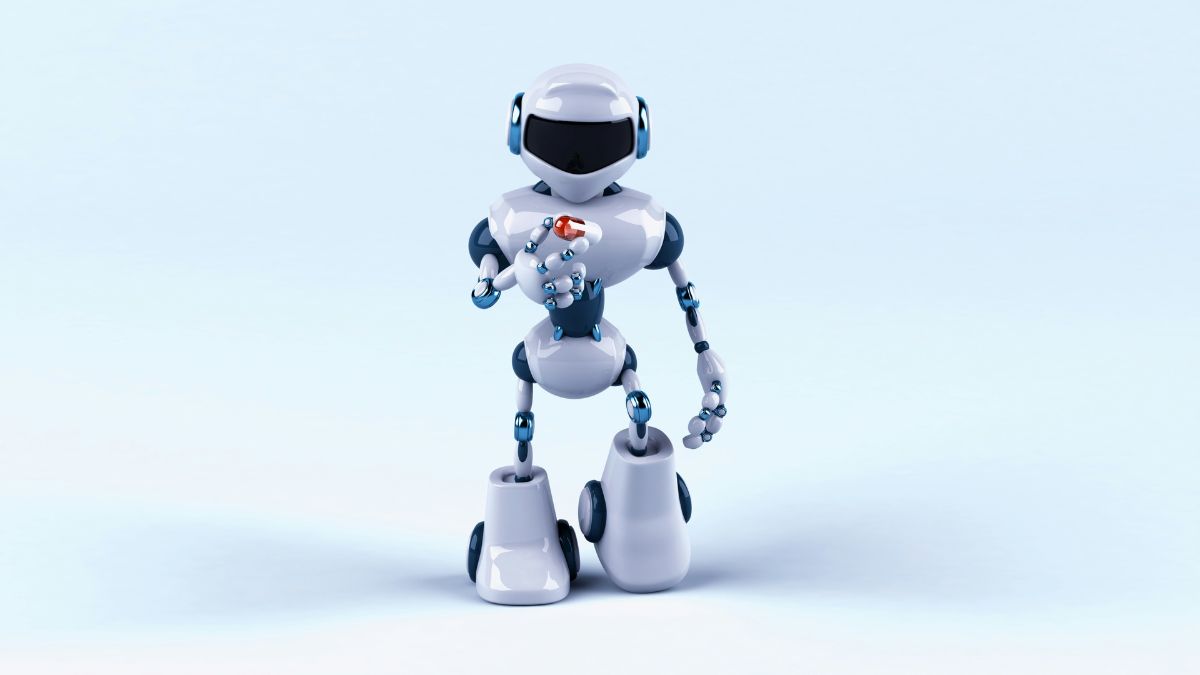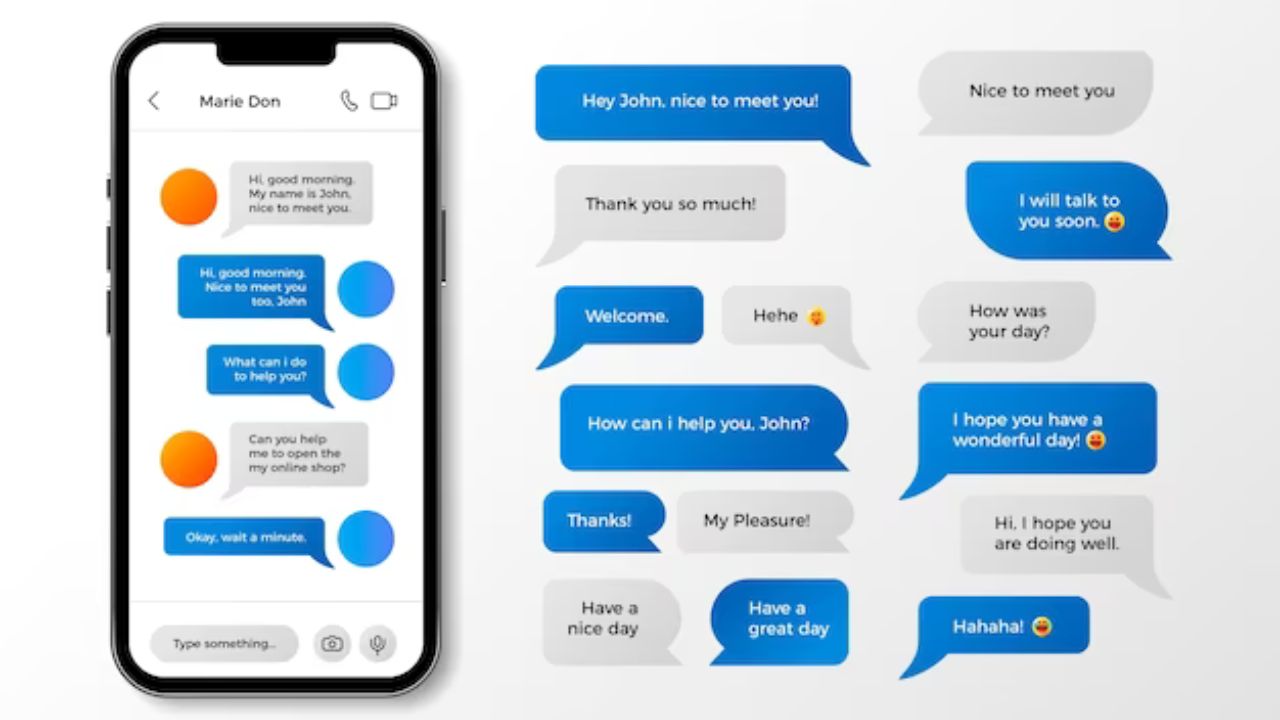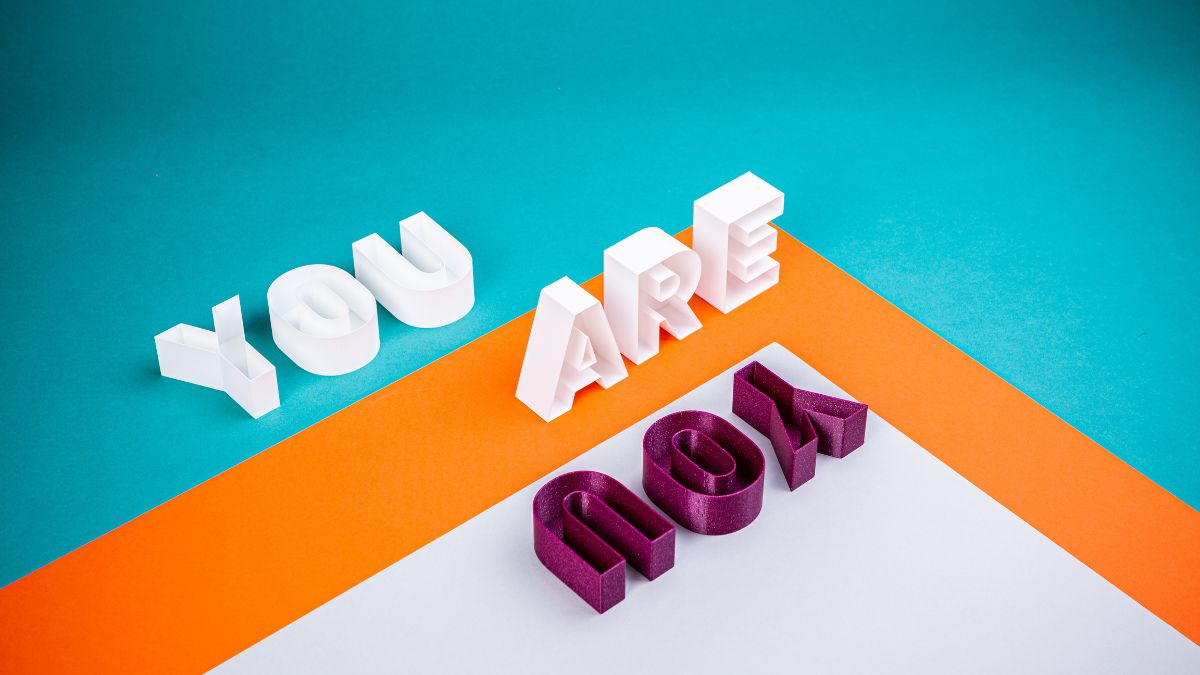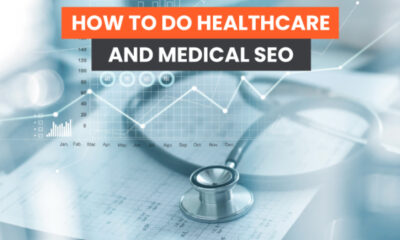TECHNOLOGY
AIOTechnical.com Health : Your Ultimate Guide to Achieving Optimal Health through Artificial Intelligence

Welcome to the future of healthcare! In a world where technology continues to advance at astonishing speeds, it’s no surprise that artificial intelligence (AI) has made its way into the medical field. AI is revolutionizing the way we approach health and wellness, offering new possibilities for achieving optimal well-being. From improving diagnosis accuracy to providing personalized nutrition plans, AI is transforming healthcare as we know it. In this ultimate guide, we will explore the incredible benefits of AI in healthcare and how it can help you take charge of your own health journey. So let’s dive in and discover how AIOTechnical.com Health can empower you on your path towards vitality and vitality through artificial intelligence!
Benefits of AI in healthcare
Artificial Intelligence (AI) has revolutionized various industries, and healthcare is no exception. The integration of AI technology in the healthcare sector brings forth numerous benefits that have the potential to transform patient care and outcomes.
AI enables faster and more accurate diagnosis. By analyzing vast amounts of medical data, AI algorithms can identify patterns and detect anomalies that may go unnoticed by human doctors. This can lead to earlier detection of diseases like cancer or heart conditions, increasing the chances of successful treatment.
AI helps streamline administrative tasks in healthcare facilities. With automated systems for appointment scheduling, billing processes, and record-keeping, hospitals can free up valuable time for healthcare professionals to focus on providing quality patient care.
Another significant benefit of AI in healthcare is its role in personalized medicine. By combining patient-specific data with machine learning algorithms, physicians can create tailored treatment plans based on individual characteristics such as genetics or lifestyle factors. This approach improves treatment effectiveness while minimizing adverse reactions.
Furthermore, AI-powered robots are being utilized during surgical procedures to assist surgeons with precision and accuracy. These robots can perform complex tasks with minimal invasiveness, reducing risks for patients undergoing surgeries.
In addition to these advantages.,AI also plays a crucial role in population health management by analyzing large datasets from electronic health records (EHRs). This information helps identify trends and risk factors within communities which aids public health officials in creating targeted interventions and preventive measures.
The benefits of incorporating AI into the healthcare industry are immense; however,, it’s important to address ethical considerations surrounding privacy concerns as well as ensuring proper training so that these technologies are used responsibly..
As we move forward into an increasingly digital era,, it is evident that leveraging the power of artificial intelligence will continue transforming how we approach health care delivery.. From improving diagnosis accuracy to enabling personalized treatments,,these advancements hold great promise for achieving optimal health outcomes..
How AI is used to improve diagnosis and treatment
Artificial intelligence (AI) has revolutionized the field of healthcare by enhancing the accuracy and efficiency of diagnosis and treatment. With its ability to analyze vast amounts of data in seconds, AI algorithms can detect patterns that may go unnoticed by human doctors. This enables early detection of diseases, leading to timely intervention and improved patient outcomes.
One way AI is used in diagnosis is through medical imaging analysis. By applying deep learning algorithms to radiology scans, such as MRIs or CT scans, AI systems can quickly identify anomalies and potential abnormalities. This not only speeds up the diagnostic process but also reduces errors caused by human interpretation.
AI-powered tools are also being used for personalized treatment plans. Through machine learning algorithms, these systems analyze patient data including genetic profiles, medical history, and lifestyle factors to generate tailored treatment options. This individualized approach improves treatment efficacy while minimizing adverse effects.
Furthermore, AI has found applications in drug discovery and development processes. By analyzing massive amounts of scientific literature and clinical trial data, AI algorithms can identify potential drug targets more efficiently than traditional methods. This accelerates the search for new therapies for various diseases including cancer, neurodegenerative disorders, and infectious diseases.
In addition to improving diagnosis and treatment accuracy, AI technology facilitates remote monitoring of patients’ health conditions using wearable devices and sensors. These devices continuously collect vital signs such as heart rate variability or blood glucose levels which are then analyzed by AI algorithms in real-time. Any concerning changes can be immediately flagged to healthcare providers who can intervene promptly.
The integration of virtual assistants into healthcare settings has further enhanced patient care management. Virtual assistants powered by natural language processing enable patients to communicate with their healthcare providers easily regarding medication schedules or appointment bookings without any hassle.
While there are undeniable benefits associated with integrating AI into healthcare practices; however ethical concerns must be addressed adequately too.
It’s crucial that privacy issues related to storing personal health information are handled securely so that patient information remains confidential.
The future of AI in healthcare holds immense potential. As AI algorithms continue to
The role of wearable devices and sensors in tracking health data
Wearable devices and sensors have revolutionized the way we track our health data. From smartwatches to fitness bands, these innovative gadgets can provide us with real-time information about our physical activity, heart rate, sleep patterns, and more. They have become an essential tool in achieving optimal health through AI.
By wearing a device on your wrist or attaching a sensor to your body, you can effortlessly monitor various aspects of your well-being. These devices use advanced technology to collect data and analyze it using artificial intelligence algorithms. This allows for personalized insights into your health status.
The benefits of wearable devices and sensors extend beyond just tracking basic metrics. They can also detect anomalies or irregularities in vital signs that may indicate underlying health issues. For example, some wearables can alert users if their heart rate is abnormally high or low during exercise, which could be a sign of cardiac problems.
Moreover, wearable devices are not limited to monitoring physical activity alone. Some models even include features like stress level tracking and guided breathing exercises to help manage mental well-being.
Thanks to AI technology integrated into these devices, they can learn from the collected data over time and provide personalized recommendations for improving overall health. Whether it’s suggesting specific exercises based on your goals or reminding you to take breaks throughout the day for better productivity – wearable devices are becoming indispensable companions on the journey towards better well-being.
In addition to individual users benefiting from these advancements in healthcare technology, healthcare professionals also find value in wearable device data when treating patients remotely or managing chronic conditions remotely. Wearable technology enables doctors to access real-time patient data without requiring frequent visits to medical facilities.
As we move forward into the future of healthcare powered by AI and IoT technologies like wearables continue advancing at such a rapid pace – one thing is certain: they will play an increasingly significant role in helping individuals achieve optimal health by providing valuable insights derived from personal biometric information captured by these smart gadgets.
Personalized nutrition and exercise plans using AI technology
Personalized nutrition and exercise plans are crucial for maintaining optimal health. Thanks to advancements in AI technology, individuals can now access tailored recommendations that cater specifically to their unique needs and goals.
AI algorithms analyze vast amounts of data, including genetic information, lifestyle habits, medical history, and dietary preferences. This data is then used to generate personalized nutrition plans based on an individual’s specific nutritional requirements. Gone are the days of generic diet advice; now we have the ability to receive precise recommendations that take into account our distinct genetic makeup.
Similarly, AI-powered fitness apps can provide personalized exercise programs designed to maximize results while considering factors like current fitness levels and personal goals. These apps use machine learning algorithms to track progress over time, adapt workouts accordingly, and offer real-time feedback during training sessions.
Using AI technology for personalized nutrition and exercise planning not only ensures greater effectiveness but also promotes long-term adherence by providing customized strategies that fit seamlessly into an individual’s lifestyle. Whether it’s managing weight loss or optimizing athletic performance, these AI-driven solutions make achieving health goals more attainable than ever before.
With convenient access to a wealth of data combined with sophisticated analysis capabilities offered by AI technology, individuals can unlock the potential for better overall well-being through truly personalized nutrition and exercise plans.
Virtual assistants for managing medication schedules and doctor appointments
In today’s fast-paced world, managing medication schedules and doctor appointments can be a daunting task. However, with the advancements in artificial intelligence (AI), virtual assistants are emerging as valuable tools to help individuals stay organized and on top of their healthcare needs.
One of the key benefits of using virtual assistants is their ability to provide reminders for medication intake. These intelligent systems can send timely notifications to ensure that medications are taken at the right time and in the correct dosage. This feature is particularly useful for individuals who have complex medication regimens or those who may forget to take their medications regularly.
Moreover, virtual assistants can also assist in scheduling doctor appointments. By integrating with online appointment booking systems, these AI-powered helpers can simplify the process of finding available slots and setting up appointments with healthcare providers. This not only saves time but also ensures that important medical consultations are not overlooked or delayed.
Additionally, virtual assistants can provide vital information about prescribed medications, including potential side effects and drug interactions. Users can simply ask questions or even show images of their prescriptions to receive accurate information regarding their medications. This helps patients make informed decisions about their health while minimizing risks associated with medication mismanagement.
Furthermore, these AI-driven companions often have access to vast databases containing detailed medical knowledge. As a result, they can answer general health-related queries and offer basic medical advice whenever needed. From symptoms analysis to first aid recommendations, virtual assistants play a crucial role in empowering individuals by providing them with instant access to reliable healthcare information.
Virtual assistants powered by AI technology hold immense potential when it comes to managing medication schedules and doctor appointments efficiently. With features like reminders for medication intake, simplified appointment scheduling processes,and ready access to accurate medical information,the integration of these intelligent systems into everyday healthcare routines has become more convenient than ever before.
As we continue embracing the power of AI in our lives,it’s excitingto see how these virtual assistants will further evolve to support our health and well-being.
Ethical concerns surrounding AI in healthcare
As artificial intelligence (AI) continues to make advancements in the healthcare industry, it brings about a multitude of ethical concerns. One major concern is privacy and security. With the vast amount of personal health data being collected and analyzed by AI systems, there is an increased risk of breaches and unauthorized access.
Another ethical dilemma revolves around transparency and accountability. How can we ensure that AI algorithms are making unbiased decisions when it comes to patient care? It’s crucial for healthcare providers to understand how these algorithms work and be able to explain their decision-making processes.
Additionally, there are concerns surrounding the potential for job displacement. As AI becomes more integrated into healthcare practices, will it replace certain roles traditionally performed by humans? This raises questions about unemployment rates within the medical field and the need for retraining programs.
Furthermore, there is a worry that reliance on AI may lead to over-reliance or misuse of technology. While AI has proven effective in many areas of healthcare, human judgment should never be completely disregarded. It’s important to find a balance between relying on AI tools while also incorporating human expertise.
There are concerns regarding bias in algorithm development. If not properly addressed during training phases, AI systems could perpetuate existing biases or even introduce new ones into medical decision-making processes.
While these ethical concerns pose challenges, they should not overshadow the potential benefits that AI brings to healthcare. By addressing these issues head-on through thoughtful regulation and continuous monitoring, we can harness the power of AI while ensuring patient safety and well-being remain at the forefront.
The future of AI in the medical field
AI has already revolutionized healthcare in numerous ways, but its potential for further advancements is truly awe-inspiring. As technology continues to evolve, we can expect AI to play an even greater role in improving patient care and outcomes.
One area where AI holds tremendous promise is medical imaging. With its ability to analyze vast amounts of data quickly and accurately, AI algorithms can help radiologists detect diseases such as cancer at earlier stages and with greater precision. This means faster diagnoses, more effective treatments, and ultimately better chances of survival for patients.
In addition to imaging, AI also has the potential to transform drug discovery and development. By analyzing large datasets from clinical trials and genetic research, machine learning algorithms can identify patterns that humans might miss. This could lead to the development of more targeted therapies and personalized medicine tailored specifically to an individual’s unique genetic makeup.
Another exciting prospect is the use of AI-powered robots in surgical procedures. These robots have the potential to enhance surgical precision and minimize human error by assisting surgeons during complex operations. They could also enable remote surgery, allowing doctors to operate on patients located far away or in emergency situations where time is critical.
Furthermore, telemedicine powered by AI will continue expanding access to healthcare services for people in remote areas or those who struggle with mobility issues. Patients will be able to consult with doctors virtually through video calls equipped with advanced diagnostic tools driven by artificial intelligence algorithms that aid in accurate diagnosis without physically visiting a healthcare facility.
However, as we embrace these technological advancements, it’s crucial not to overlook ethical concerns surrounding privacy rights and bias within AI systems. Striking a balance between harnessing the power of technology while maintaining patient trust will be essential moving forward.
In conclusion (as per your instructions), the future of AI in healthcare holds incredible potential for transforming how we prevent illness,
diagnose conditions,
treat diseases,
and manage overall health.
By continuing to explore and embrace AI advancements, we can truly revolutionize healthcare and improve the
Conclusion: Embracing the power of AI to
Conclusion: Embracing the power of AI to transform healthcare
As we have explored throughout this article, the integration of artificial intelligence into the field of healthcare holds immense potential for improving patient outcomes and revolutionizing the way we approach health. From diagnosis and treatment to personalized nutrition plans and virtual assistants, AI is proving to be a game-changer.
By harnessing the analytical capabilities of AI algorithms, medical professionals are able to make more accurate diagnoses, identify patterns in large datasets that humans may overlook, and develop targeted treatment plans. This not only saves time but also enhances patient care by minimizing errors.
Wearable devices and sensors further contribute to this transformation by allowing individuals to track their own health data in real-time. Whether it’s monitoring heart rate during exercise or tracking sleep patterns, these devices provide valuable insights that can help individuals make informed decisions about their well-being.
The use of AI technology also extends beyond physical health; it encompasses mental health as well. Virtual assistants can assist patients in managing their medication schedules and doctor appointments, ensuring adherence to treatment plans and reducing administrative burdens on both patients and healthcare providers.
However, with all its promise comes ethical concerns surrounding privacy, security, bias in algorithms, and job displacement. It is crucial for stakeholders in healthcare systems – policymakers, researchers, clinicians – to address these concerns proactively so that the benefits of AI can be fully realized while safeguarding patient rights.
Looking ahead into the future of healthcare powered by AI technology shows tremendous possibilities. As research advances continue at a rapid pace across various fields such as genomics and personalized medicine,
we can expect even greater precision in diagnostics,
more effective treatments tailored specifically for individual patients,
and a shift towards proactive rather than reactive care.
AI has already begun transforming our lives,
and its impact on healthcare will only grow stronger over time.
So let us embrace this remarkable tool
to improve our overall well-being
and pave the way towards optimal health.
AIOTechnical.com Health is at the forefront of this exciting revolution,
TECHNOLOGY
Discovering the Origins and History of Leomorg: A Deep Dive

Welcome, curious minds and folklore enthusiasts, to a journey through the mystical realms of Celtic mythology. Today, we delve into the enigmatic legend of Leo morg – a tale shrouded in mystery and steeped in ancient lore. Join us as we uncover the origins, symbolism, and modern-day relevance of this captivating figure. Get ready to be spellbound by the mesmerizing story of Leomorg!
The Origins of the Name
The name Leomorg is shrouded in mystery and intrigue, captivating the imagination of those who delve into its origins. While some believe it stems from Celtic roots, others suggest a more mystical etymology linked to ancient folklore. The very sound of the name evokes a sense of power and mysticism, leaving room for endless interpretations.
Some scholars speculate that “Leo morg” could be derived from Old Celtic languages, meaning “lion-like” or “great warrior”. This association with strength and bravery adds layers of complexity to the character attributed to Leomorg in various legends and tales throughout history.
Others propose a connection to mythical creatures or deities, hinting at a deeper significance beyond mere linguistic origins. Whatever the true source may be, the name Leomorg continues to evoke wonder and fascination among enthusiasts of mythology and folklore worldwide.
Various Interpretations and Depictions of Leomorg in Literature and Art
Leomorg, the mysterious figure of Celtic mythology, has captured the imaginations of artists and writers throughout history. In literature, Leomorg is often depicted as a powerful sorcerer or a wise elder with mystical abilities. Some interpretations portray Leomorg as a guardian of ancient wisdom, while others present him as a trickster figure challenging societal norms.
In art, Leomorg’s visage can be found in intricate tapestries and elaborate paintings. Artists have rendered him with flowing robes and piercing eyes, symbolizing his connection to the spiritual realm. Each depiction offers a unique perspective on this enigmatic character, adding layers to his mythos.
From epic poems to modern novels, Leomorg’s presence looms large in storytelling traditions worldwide. His character serves as both mentor and antagonist, guiding heroes on their quests or testing their resolve with cunning challenges. Whether portrayed as benevolent or malevolent, Leomorg remains an enduring figure whose complexity continues to inspire creativity across artistic mediums.
The Role of Leomorg in Celtic Mythology
In Celtic mythology, Leomorg is a prominent figure known for their wisdom and connection to nature. Often depicted as a powerful shapeshifter, Leomorg embodies the duality of light and darkness, symbolizing the ever-changing cycles of life. Legends speak of Leomorg’s ability to commune with animals and plants, bridging the gap between humans and the natural world.
As a guardian spirit, Leomorg is revered for their role in protecting sacred lands and guiding lost souls towards enlightenment. Their presence in tales reflects the deep reverence ancient Celts held for nature and its interconnectedness with all living beings. Through stories passed down through generations, Leomorg continues to be celebrated as a symbol of harmony, balance, and spiritual growth within Celtic folklore.
The intricate layers of symbolism surrounding Leomorg offer insight into the complex beliefs and values cherished by the Celtic people. Their mythic presence serves as a reminder of our intrinsic connection to the earth and the importance of respecting all forms of life around us.
Exploring the Symbolism and Meaning Behind Leomorg
Delving into the symbolism and meaning behind Leomorg unveils a rich tapestry of interpretations that have intrigued scholars and enthusiasts alike. In Celtic mythology, Leomorg is often depicted as a powerful figure associated with nature, magic, and the cycles of life. Some believe that Leo morg embodies the dualities present in the natural world – light and darkness, creation and destruction.
The lion motif within Leomorg’s name symbolizes courage, strength, and leadership. It signifies a fierce protector who defends their realm with unwavering resolve. The merging of “leo” for lion and “morg” for sea hints at a harmonious balance between land and water elements.
As an enigmatic being shrouded in mystery, Leo morg’s significance may vary depending on cultural contexts. Whether viewed as a guardian spirit or a force of primal energy, exploring these layers adds depth to our understanding of this captivating legend.
Modern-Day Relevance and Popularity of Leo morg
In today’s world, the legend of Leomorg continues to captivate and intrigue audiences across various mediums. With the rise of fantasy literature, movies, and games, Leo morg has found a new audience eager to delve into its rich mythology.
The mysterious nature of Leomorg as a figure from Celtic folklore adds an air of mystique that resonates with modern audiences seeking tales of magic and adventure. The character’s complex backstory and symbolism make it a compelling subject for artists and writers looking to explore themes of power, destiny, and transformation.
Moreover, in popular culture, references to Leomorg can be found in everything from books to TV shows – evidence that this ancient legend still holds relevance in our contemporary society. As we continue to uncover more about the origins and history of Leomorg, we are reminded of the enduring power stories have in shaping our imaginations.
Conclusion: Why the Legend of Leomorg Continues to Fascinate Us Today
As we have delved into the fascinating origins and history of Leomorg, it becomes evident why this legendary figure continues to captivate our imagination even in modern times. The enduring appeal of Leomorg lies in its rich symbolism, deep-rooted connections to Celtic mythology, and various interpretations that have kept the legend alive for centuries.
The name “Leomorg” itself evokes a sense of mystery and power, drawing us into a world where mythical creatures roam and enchanting tales unfold. Through literature and art, Leomorg has been portrayed in diverse ways, reflecting the ever-evolving nature of storytelling and creativity.
In Celtic mythology, Leomorg plays a significant role as a symbol of strength, wisdom, and protection. As we unravel the layers of meaning behind this enigmatic figure, we uncover timeless truths about courage, resilience, and the eternal battle between light and darkness.
Today, the legend of Leomorg continues to resonate with audiences around the world. Its relevance persists not only because of its historical significance but also due to its ability to inspire hope, spark curiosity, and ignite our imaginations.
In a fast-paced world filled with constant distractions and uncertainties,
the enduring allure of Leomorg serves as a reminder of our innate longing for magic,
mystery,and wonder. So let us embrace this ancient tale with open hearts
and minds,enrichingour liveswithits timeless wisdomandspellbinding charm.
Maythelgendofleomegcontinue topique urcurisytodscverwondrousworlds
beyondourwildestdreams.
TECHNOLOGY
Webcord Virus: A Threat to Your Online Security

In the ever-evolving landscape of cybersecurity, new threats emerge constantly, lurking in the shadows of the digital realm. One such menace that has been making waves is the elusive Webcord Virus. This insidious malware can wreak havoc on both individuals and businesses alike, compromising online security with its stealthy tactics. Join us as we delve into the depths of this cyber threat, uncovering how it spreads, its impact, prevention methods, and what to do if your system falls victim to its malicious intentions. Stay tuned to arm yourself with knowledge in this ongoing battle for digital defense!
What is the Webcord Virus?
The Webcord Virus is a sophisticated form of malware designed to infiltrate computer systems and steal sensitive information. This cunning cyber threat operates covertly, often going undetected by traditional antivirus programs. Once inside a system, Webcord can gather data such as passwords, financial details, and personal information without the user’s knowledge.
Unlike typical viruses that cause visible damage or disrupt system functions, Webcord works silently in the background, making it difficult to detect until it’s too late. It can spread through malicious email attachments, infected websites, or compromised downloads, leveraging various entry points to infect unsuspecting victims.
The primary goal of the Webcord Virus is to harvest valuable data for nefarious purposes like identity theft or financial fraud. With its ability to operate stealthily and evade detection measures, this insidious malware poses a significant threat to online security for individuals and businesses alike.
How Does it Spread and Infect Systems?
Webcord Virus is a malicious software that spreads through various channels, posing a serious threat to online security. One common way for Webcord to infect systems is through phishing emails. Users may receive an email with a seemingly innocent attachment or link, but once opened, the virus can infiltrate the system.
Another method of spreading is via infected websites or links. Cybercriminals embed the virus in these sites, waiting for unsuspecting users to click on them. Once clicked, Webcord can quickly spread and infect the user’s device.
Furthermore, downloading files from untrustworthy sources or using compromised USB drives can also lead to a Webcord infection. It’s essential to be cautious when interacting with unknown links or files online to prevent falling victim to this dangerous virus.
The Impact of Webcord on Individuals and Businesses
Webcord Virus doesn’t discriminate – it poses a threat to both individuals and businesses alike. For individuals, falling victim to Webcord can result in stolen personal information, financial loss, and compromised online security. Imagine your passwords, credit card details, and sensitive data being accessed by cybercriminals without your knowledge.
Businesses are not immune to the impact of Webcord either. A successful breach could lead to confidential company data being leaked or held for ransom. The consequences can be devastating – from financial repercussions due to downtime and recovery costs to reputational damage that may take years to repair.
The aftermath of a Webcord attack can be chaotic for anyone caught in its web. It’s crucial for both individuals and businesses to stay vigilant against this insidious threat lurking in the digital realm.
Prevention Methods to Protect Against Webcord
To safeguard your system against the Webcord virus, implementing preventive measures is crucial. Ensure your antivirus software is up to date and running regular scans on your system to detect any potential threats. Additionally, be cautious when clicking on links or downloading attachments from unknown sources as these can serve as entry points for malware like Webcord.
Another effective prevention method is to enable a firewall on your device to block unauthorized access and malicious connections. Regularly updating your operating system and applications can also help patch security vulnerabilities that cyber attackers may exploit to distribute the Webcord virus.
Moreover, practicing safe browsing habits such as avoiding suspicious websites and being wary of phishing emails can significantly reduce the risk of falling victim to Webcord. Consider utilizing a virtual private network (VPN) when connecting to public Wi-Fi networks for an added layer of security against potential threats like the Webcord virus.
Steps to Take if Your System is Infected
Discovering that your system has fallen victim to the Webcord Virus can be a stressful experience. However, it’s crucial to act swiftly and decisively to mitigate further damage. The first step is to disconnect your device from the internet to prevent the virus from spreading or communicating with its source. Next, run a full scan using reputable antivirus software to identify and remove any malicious files associated with Webcord.
If you suspect sensitive information may have been compromised, change all passwords immediately, starting with important accounts like banking or email. Consider reaching out to cybersecurity professionals for assistance in thoroughly cleaning your system and ensuring no lingering threats remain hidden.
After removing the virus, update all software on your device and enable firewall protection to strengthen your defenses against future cyber threats. Remember to regularly back up essential data on external drives or secure cloud storage platforms as an added precaution against potential data loss due to malware attacks.
Other Dangerous Cyber Threats to Watch Out For
In addition to the Webcord virus, there are several other dangerous cyber threats that individuals and businesses need to be aware of. Ransomware is a particularly insidious threat where malicious software encrypts your files and demands payment for their release. Phishing attacks involve tricking users into revealing sensitive information through fake emails or websites. Malware, including trojans and worms, can infect systems and steal data without the user’s knowledge.
Another growing concern is DDoS (Distributed Denial of Service) attacks, which overwhelm a website with traffic to make it unreachable. Social engineering tactics manipulate individuals into divulging confidential information or performing actions that compromise security. IoT (Internet of Things) devices also pose risks as they can be vulnerable to hacking if not properly secured.
Being informed about these various cyber threats is crucial in safeguarding your online security and privacy. Stay vigilant and take proactive measures to protect yourself from potential attacks in the digital realm.
Conclusion: Importance of Staying Vigilant in the Digital Age
In the ever-evolving landscape of cybersecurity threats, staying vigilant is paramount. The Webcord Virus serves as a stark reminder of the risks that individuals and businesses face in the digital age. By understanding how this malware operates, implementing proactive measures to safeguard systems, and being prepared to respond swiftly to potential infections, we can better protect ourselves against such malicious attacks.
Remember that prevention is always better than cure when it comes to cybersecurity. Regularly updating software, using reputable antivirus programs, practicing safe browsing habits, and educating yourself and your employees about cyber threats are essential steps in fortifying your online security defenses.
While Webcord is a significant concern, it’s crucial not to overlook other dangerous cyber threats lurking online. From ransomware attacks to phishing scams and data breaches, there are numerous risks that necessitate constant vigilance and proactive measures.
By remaining informed, cautious, and proactive in our approach to cybersecurity practices, we can reduce the likelihood of falling victim to malicious actors like those behind the Webcord Virus. Remember: in today’s digital age, being vigilant is not just an option – it’s a necessity for safeguarding our sensitive information and maintaining our online safety.
TECHNOLOGY
Timeless Tips for Selecting the Perfect Men’s Glasses

Key Takeaways:
– Understand how frame shape compliments different face types.
– The importance of the right material for comfort and durability.
– Know which lens options suit your lifestyle and prescription needs.
Table of Contents:
- Face Shape and Frame Style
- Frame Material Matters
- Consider Lens Technology
- Color and Personal Style
- Understanding Measurements
- Adjusting to New Glasses
- Budgeting for Quality
- Routine Care and Maintenance
Few accessories can compete with the subtle sophistication of a well-chosen pair of men’s glasses when making a personal statement. Not just a necessity for visual correction, eyewear has emerged as a cardinal touchpoint of style, serving as a critical element of a man’s aesthetic identity. This makes selecting the perfect pair both an art and a science that balances aesthetic appeal with the physical contours of one’s face and the practicalities of everyday wear.
Face Shape and Frame Style
Just as a tailor must measure a client for a suit, the journey to the ideal eyewear begins with understanding the relationship between face shape and frame style. This artful synergy in selecting the right men’s glasses can highlight a person’s best features, emphasize their individuality, and even impact their perceived professionalism in the workplace. Oval faces, for example, offer a balanced canvas for most frame designs. In contrast, heart-shaped faces pair delightfully with bottom-heavy frames that add width to the lower half of the face. Circular frames can bring out the gentle curves of a face. At the same time, angular and boxier designs create an assertive and strong silhouette. In the end, the perfect frame style isn’t just the one that looks good on the shelf—it’s the one that acts as an extension of your brand when placed upon your face.
Frame Material Matters
The material of the frame is a direct reflection of one’s style and intended use. Metal frames propose a sleek and professional aura suited for the boardroom or sophisticated social settings. Plastic frames, conversely, announce their presence with diverse designs and colors, suitable for a more vibrant and dynamic portrayal. For those with a conscience for sustainability, frames constructed from renewable resources such as wood or recycled materials provide a statement piece that speaks volumes of the wearer’s values. Beyond aesthetics, the functionality of materials—like hypoallergenic properties, weight, and durability—plays a vital role in everyday comfort and the longevity of the frames.
Consider Lens Technology
Advancements in lens technology have transformed eyewear into devices of futuristic utility, turning a traditional pair of spectacles into a tool for the modern world. Photochromic lenses, for instance, adapt to varying light levels, offering consistent visual comfort indoors or in direct sunlight. Anti-reflective coatings have become indispensable in reducing glare from onscreen work and mitigating eye strain during long hours at the computer. For the sportively inclined or those with adventurous vocations, impact-resistant lenses provide a shield against everyday mishaps. When considering lens options, it’s important to look beyond aesthetics to recognize the diverse protections and enhancements available to suit your lifestyle.
Color and Personal Style
The ethos of personal style is captured succinctly in the colors we elect to showcase. The hue of your frames can complement or contrast with your wardrobe, influencing perceptions and articulating personality. Classic colors like tortoiseshell, gunmetal, and black bear an eternal appeal and provide a flexible base for various sartorial choices. Those with a penchant for individualism might find resonance with more vibrant colors or unique patterns that give the world a glimpse of their creativity. It’s not a decision to be underestimated—the color of your frames can shape first impressions and epitomize your sense of style.
Understanding Measurements
Comfort in eyewear is predicated on precision. By understanding the nuanced measurements that dictate the physical fit of glasses, individuals can avert common setbacks such as the unwelcome pressure behind the ears or the incessant slip down the nose. The width of the lens, the distance between lenses at the bridge, and the length of the temple arms are all discrete yet critical metrics that govern the realm between a bothersome accessory and a seamless extension of oneself. Once these metrics are ascertained, one can make an informed choice, ensuring the glasses feel as good as they look.
Adjusting to New Glasses
A transition phase often accompanies the debut of new eyewear, much like acclimating to a new environment. This period can be characterized by an unfamiliar clarity or depth perception as the visual system aligns with the new prescription. Initial disorientation or visual fatigue is not uncommon. Still, it subsides as the eyes become accustomed to the new aids. During this adaptation period, wearing the glasses consistently is essential; avoiding them can prolong the adjustment process. Patience is key, and if challenges persist, an optician’s expertise may be sought to ensure the glasses are tailored for optimal performance.
Budgeting for Quality
The delicate negotiation between quality and cost is apparent in the eyewear market. Though tempting, it is judicious to resist the urge to economize at the expense of quality, as the two are not mutually exclusive. Investing in a high-fidelity pair of glasses can lead to years of dependable wear, comfort, and enduring style—amortizing the initial cost over their lifespan. Quality eyewear also boasts superior materials and craftsmanship, which means fewer repairs and replacements. A wisdom-filled shopping approach that balances the initial investment against potential long-term benefits can indeed culminate in possessing luxury within budgetary reasons.
Routine Care and Maintenance
Like any cherished possession, glasses demand ongoing care to ensure lasting service. Routine cleaning of the lenses using suitable solutions and a lint-free cloth can preserve their pristine clarity. Furthermore, keeping glasses in a protective case when not adorned safeguards against scratches and deformation. Adjustments and fitments by a qualified professional can prolong the functional life of the eyewear, ensuring it continues to serve as a trusty companion. Simple, mindful habits in the care of one’s glasses can considerably extend one’s tenure as an invaluable asset to one’s visual health and fashion ensemble.
-

 LOVE MESSAGES5 months ago
LOVE MESSAGES5 months agoSweet Love Messages for Her to Make Her Smile
-

 LOVE MESSAGES5 months ago
LOVE MESSAGES5 months ago100 Romantic Good Evening Messages For Her & Him
-

 LOVE MESSAGES5 months ago
LOVE MESSAGES5 months agoRomantic Love Messages For My Husband With Images
-

 LOVE MESSAGES5 months ago
LOVE MESSAGES5 months ago50 Just Checking on You Text Messages for Him & Her
-

 LOVE MESSAGES5 months ago
LOVE MESSAGES5 months agoSweet Love Messages For My Wife With Images
-

 LOVE MESSAGES5 months ago
LOVE MESSAGES5 months agoLong Good Morning Messages to Make Her Fall in Love
-

 LOVE MESSAGES5 months ago
LOVE MESSAGES5 months ago50 Cute Good Night Sweet Dreams Messages For Lovers
-

 LOVE QUOTES3 months ago
LOVE QUOTES3 months agoplease forgive me quotes her him images








